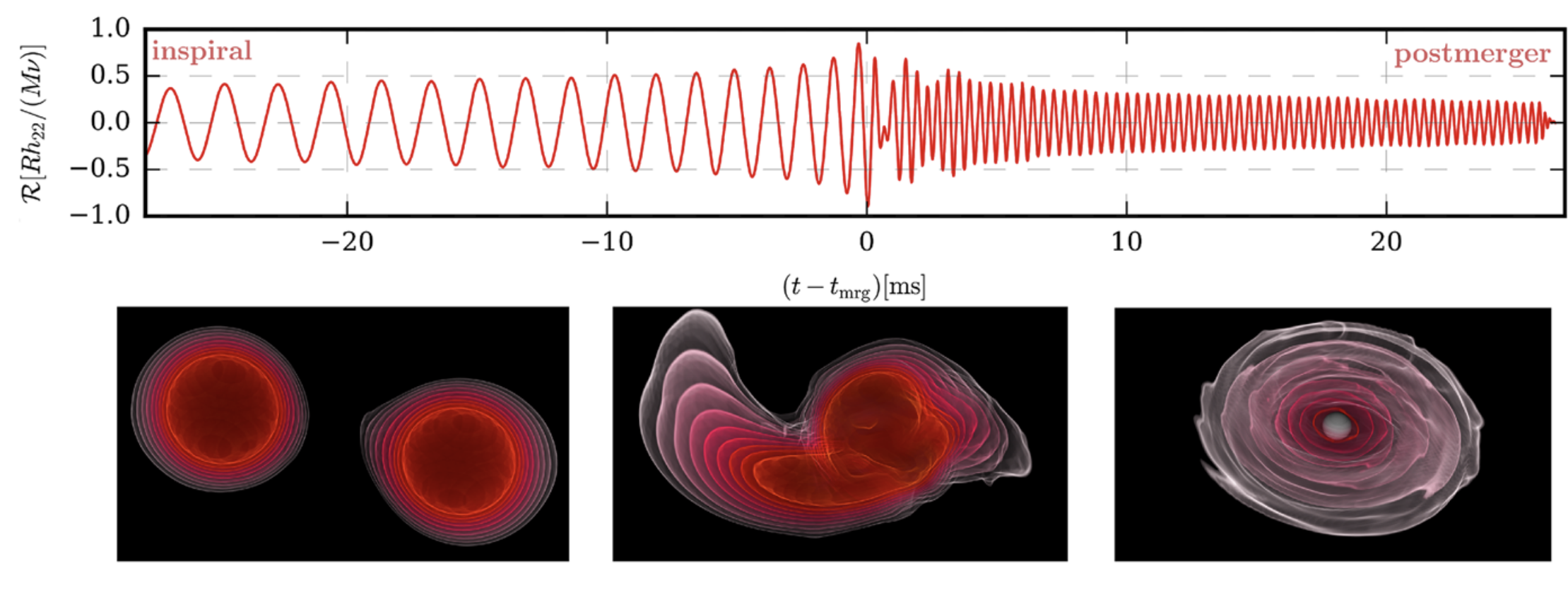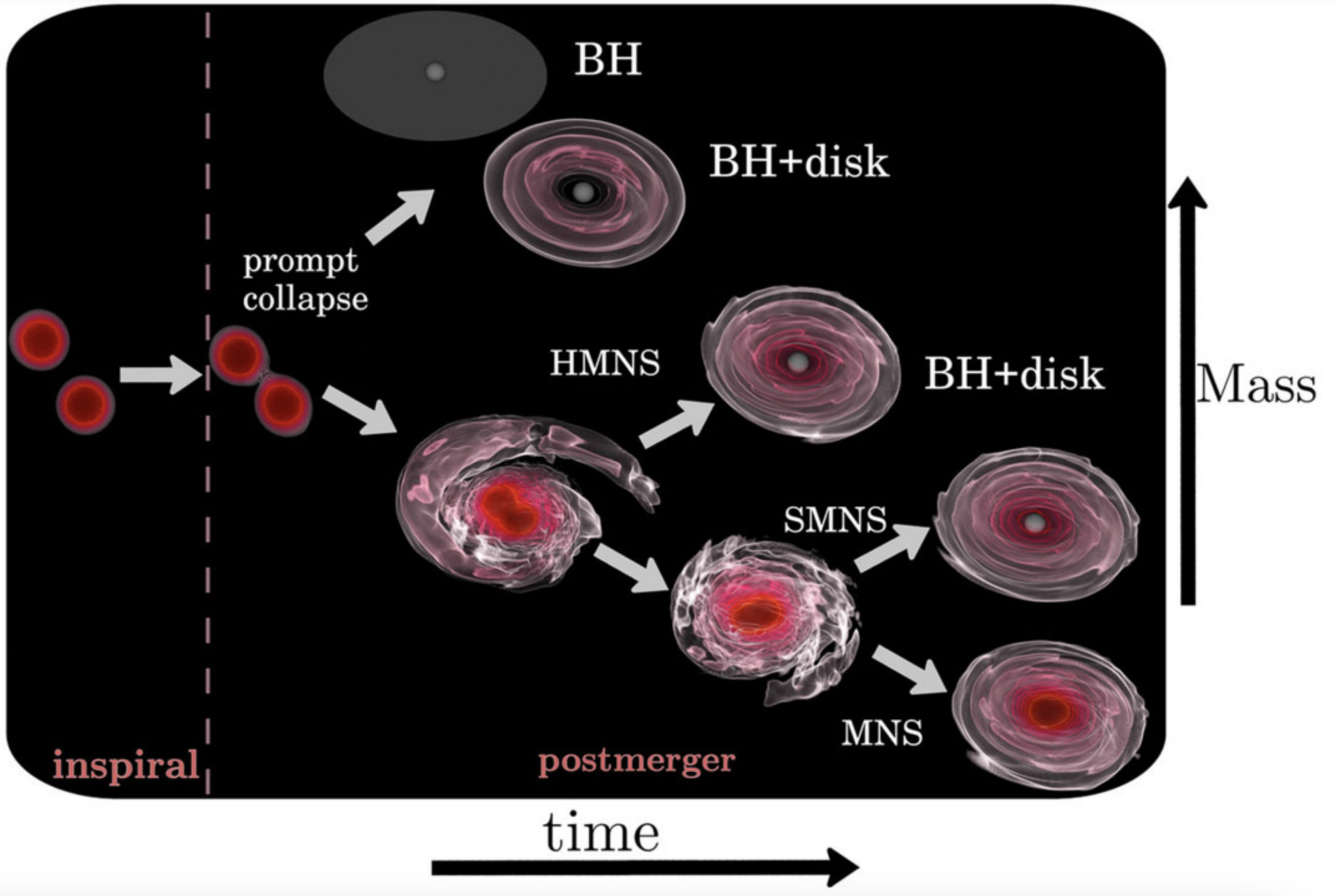This is an old revision of the document!
Binary Neutron Star Systems
A system consisting of two neutron stars is called a binary neutron star or a double neutron star system. Numerous of these systems exist and have been observed through electromagnetic observations. Among the best well-known binary neutron star system is the Hulse-Taylor Pulsar. The observation of the increase in the orbital frequency of the Hulse-Taylor Pulsar has been the first indirect evidence for the emission of gravitational waves. In 2017 it was possible, for the first time, to detect directly gravitational waves emitted from the merger of two neutron stars, the system GW170817. In addition to the emission of gravitational waves, neutron star mergers are also bright sources of electromagnetic counterparts. In particular, the ejected material that can trigger a kilonova or the remnant system, which consists of a central compact object and an accretion disk.
Stages of the Binary Neutron Star Coalescence:

- Inspiral: Due to the emission of gravitational waves, the system `loses' angular momentum such that the two stars approach each other. To leading order, the emitted gravitational wave system depends on the quadrupole moment of the system and can be computed following the quadruple formula:
- Merger
- Postmerger/Ringdown

